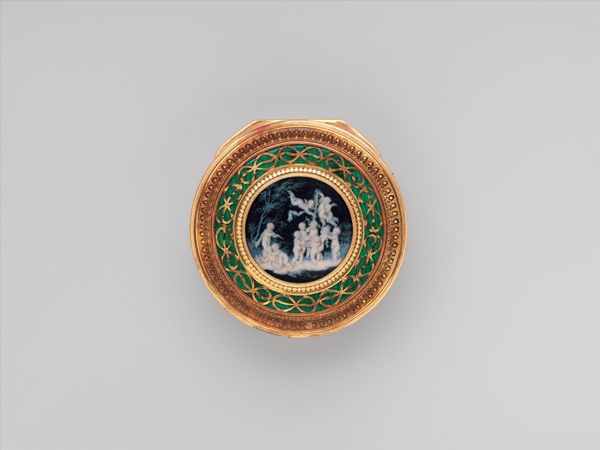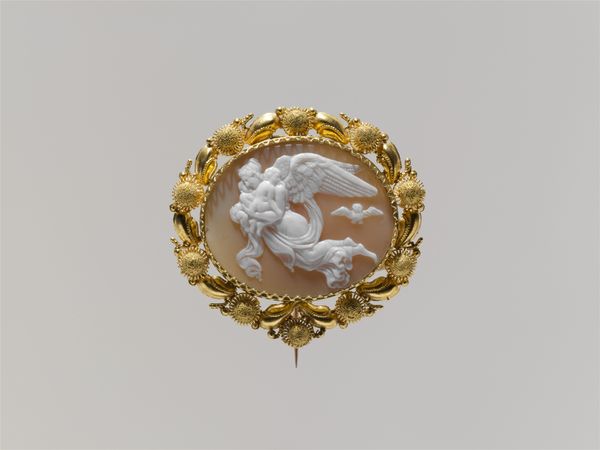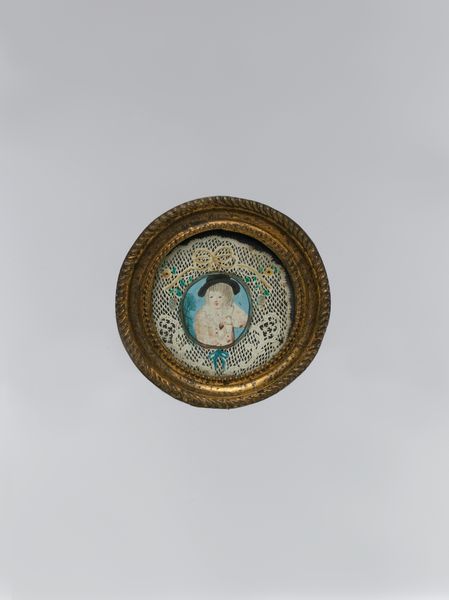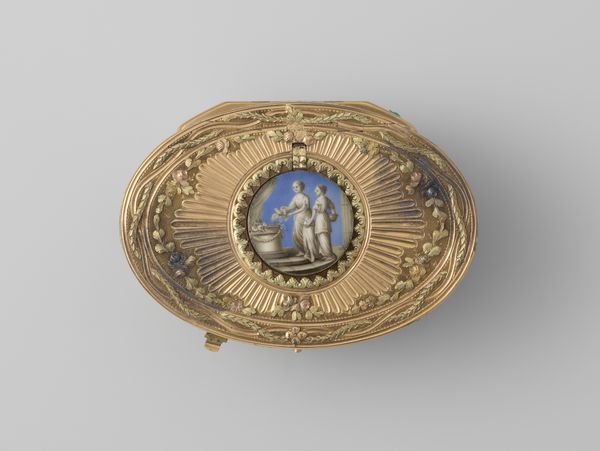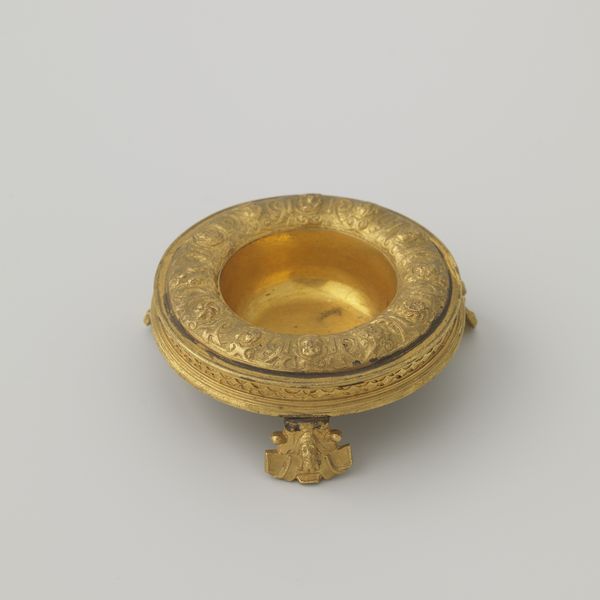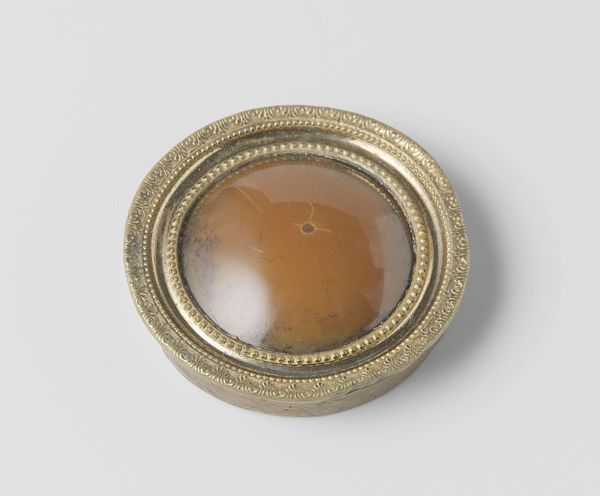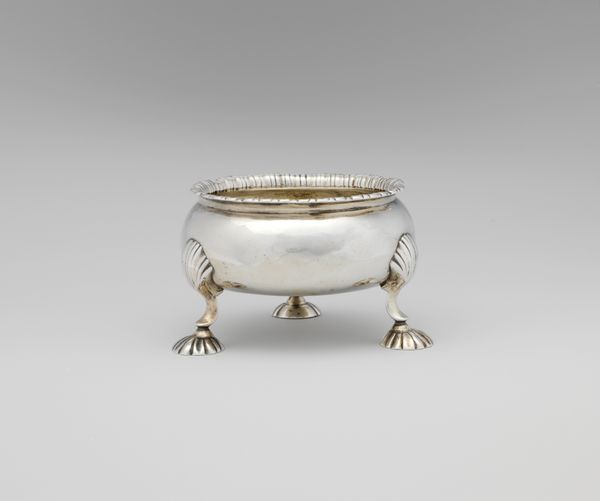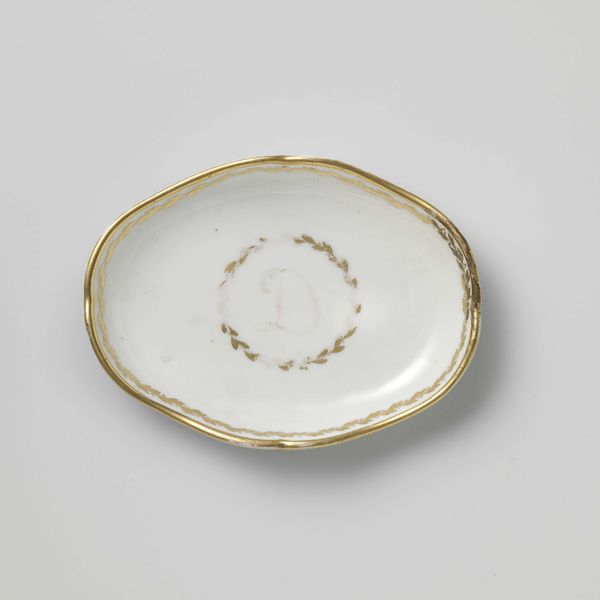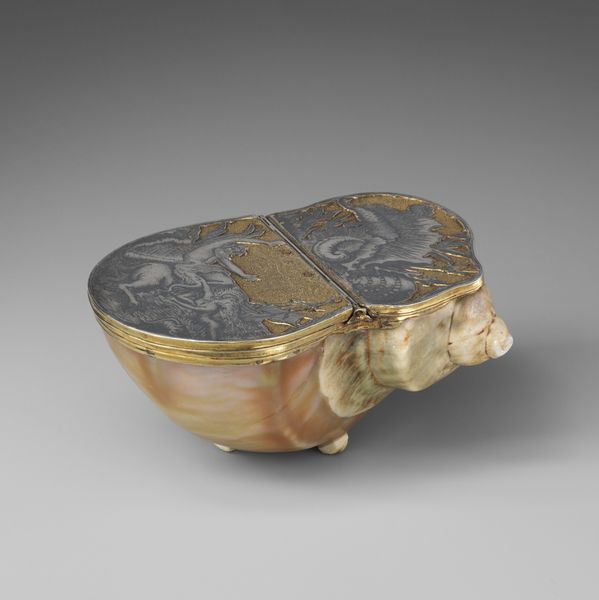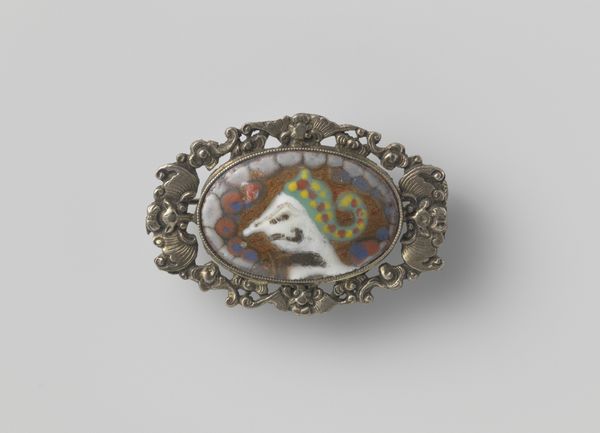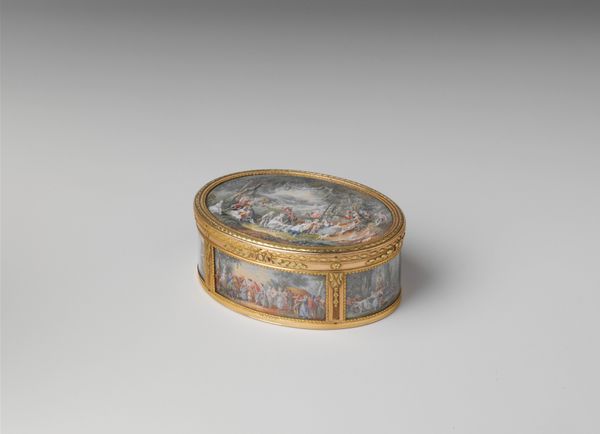
Snuffbox with six allegories of love 1775 - 1776
0:00
0:00
Dimensions: box: 2-15/16 x 2-1/4 in. (7.5 x 5.7 cm); miniatures: top, oval, 1 1/8 x 1 5/8 in. (28 x 43 mm); bottom, oval, 1 1/8 x 1 5/8 in. (28 x 43 mm); front 1/2 x 1 1/8 in. (11 x 30 mm); back 1/2 x 1 1/8 in. (11 x 30 mm); left side 1/2 x 1 1/8 in. (11 x 30 mm); right side 1/2 x 1 1/8 in. (11 x 30 mm)
Copyright: Public Domain
Curator: This beautiful object is a snuffbox, created by Jacques Joseph de Gault around 1775. Its lid is adorned with six allegories of love. The piece resides at the Metropolitan Museum of Art in New York. Editor: My initial impression is one of intimate theatricality; it’s incredibly small and self-contained, but evokes these expansive classical narratives. It’s like a secret world. Curator: It does feel like a miniature stage, doesn't it? We have to situate objects like this snuffbox within the larger sociopolitical landscape of the late 18th century. Snuffboxes like this would have been status symbols, communicating very clear messages about taste, class and privilege. How does its Rococo style play into this context for you? Editor: Well, Rococo, especially in an object like this, relies heavily on symbolism and its capacity to distill complex ideas into a visual language. The allegories of love – how are they depicted, what symbols recur? That would tell us so much about the ideals of love at the time. What meanings are embedded? Curator: The themes often revolve around courtship and idealized notions of romance. To engage with the symbolism further we would consider whose experiences are privileged in these scenes. We should be looking at how these ideas of love are entangled with structures of power. The question becomes: Who is love for? And how does the visual representation serve particular interests? Editor: Absolutely, the medium and its intended use dictate how we can interpret these symbols. Snuff-taking itself carried a particular social weight and offered another symbolic gesture, no? Curator: Exactly, from the material composition to the imagery depicted, every element contributed to its carefully curated message. Even the act of opening and using it becomes performative! Editor: These types of pieces offer more than mere aesthetic appeal, it's about sparking reflection and challenging accepted norms to give objects voice from multiple viewpoints. Curator: I agree, that consideration is the very key to unlocking deeper historical understandings and bringing new layers to art history. It makes these artifacts continually relevant.
Comments
No comments
Be the first to comment and join the conversation on the ultimate creative platform.
